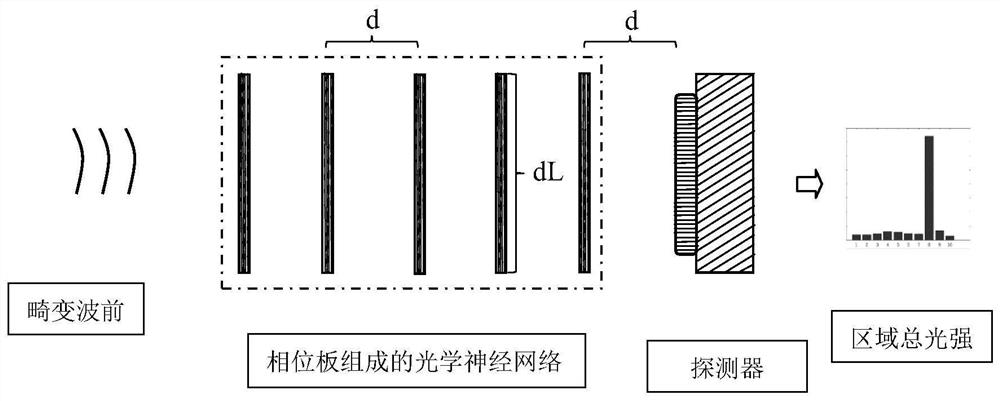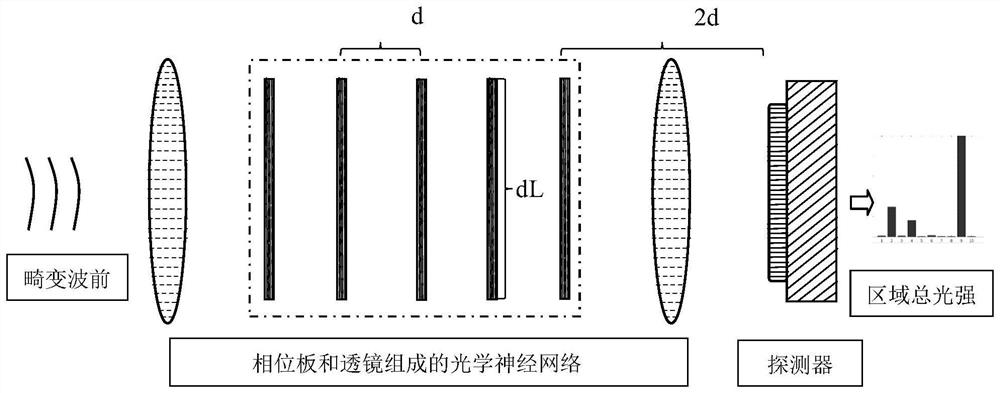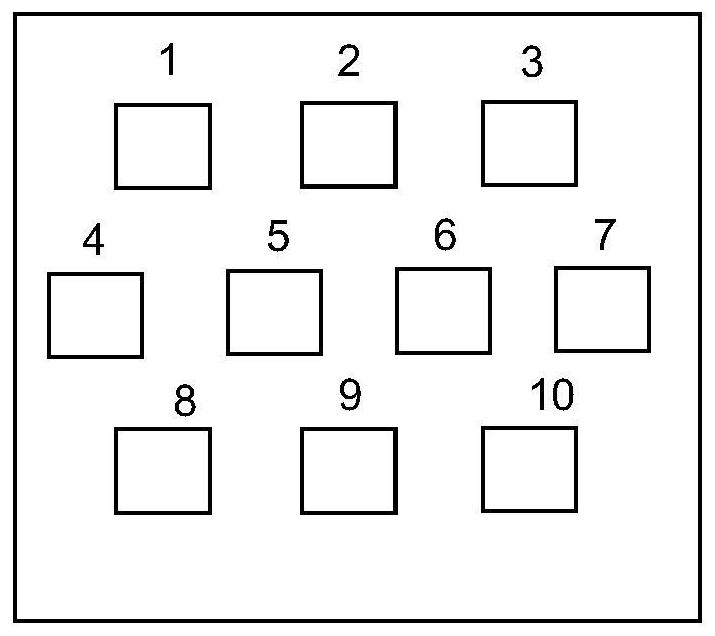Wavefront restoration method and system based on diffractive optical neural network
A neural network and diffractive optics technology, applied in the field of wavefront restoration methods and systems based on diffractive optical neural networks, can solve problems such as slow speed, high energy consumption, loss of phase information, etc. Simplified effect
- Summary
- Abstract
- Description
- Claims
- Application Information
AI Technical Summary
Problems solved by technology
Method used
Image
Examples
Embodiment 1
[0033] The system diagram of embodiment 1 is as follows figure 1 As shown, the attached figure 1 Describe the detailed implementation process of the technical solution of Embodiment 1.
[0034] First, the wavefront W is decomposed into Zernike polynomials, and within the first 10 Zernikes, the third-order Zernikes are randomly selected, given by Generate a mixed wavefront, which forms a data pair with the corresponding coefficients, and repeat the above process to generate a data set consisting of about 20,000 wavefront-coefficient data pairs.
[0035] Secondly, under a deep learning framework such as Tensorflow, construct an optical neural network model, set the size and interval of the phase plate, and use the phase distribution of the phase plate as a parameter to train the data set. The phase in the data set is used as the input of the neural network to obtain the corresponding output, and the loss function is used to compare the output with the N-order Zernike coeffici...
Embodiment 2
[0038] The system diagram of embodiment 2 is as follows figure 2 As shown, the attached figure 2 Describe the detailed implementation process of the technical solution of Embodiment 2.
[0039] First, within the first 10 Zernikes, the third-order Zernikes are randomly selected to generate a mixed wavefront, thereby generating a data set consisting of about 20,000 wavefront-coefficient data pairs.
[0040] In this example, in order to overcome the situation that the energy distribution may exceed the size of the phase plate in the process of light wave propagation that may occur in multi-order phases, focusing mirrors are placed front and back to gather light waves.
[0041] Secondly, under a deep learning framework such as Tensorflow, construct an optical neural network model, train the data set, and finally obtain the two-dimensional phase distribution of each phase plate, which is converted into the thickness of the phase plate according to the refractive index.
[0042]...
PUM
 Login to View More
Login to View More Abstract
Description
Claims
Application Information
 Login to View More
Login to View More - R&D
- Intellectual Property
- Life Sciences
- Materials
- Tech Scout
- Unparalleled Data Quality
- Higher Quality Content
- 60% Fewer Hallucinations
Browse by: Latest US Patents, China's latest patents, Technical Efficacy Thesaurus, Application Domain, Technology Topic, Popular Technical Reports.
© 2025 PatSnap. All rights reserved.Legal|Privacy policy|Modern Slavery Act Transparency Statement|Sitemap|About US| Contact US: help@patsnap.com



